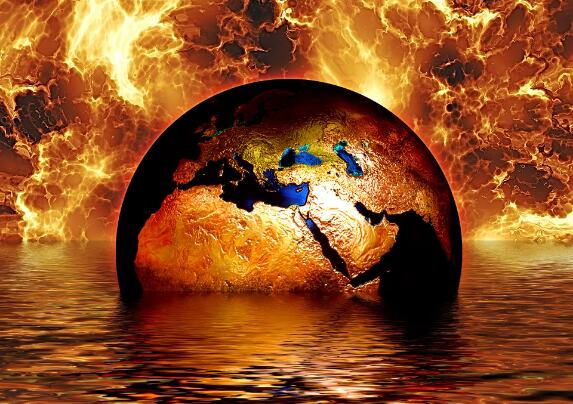Point of no return

The latest report by the UN's Intergovernmental Panel on Climate Change (IPCC) emphasises that the so-called 'redline' of climate disaster is much closer than what was previously assumed. Released on August 9, 'Climate Change 2021: the Physical Science Basis' reveals that global temperatures have already risen to 1.1 degrees Celsius above pre-industrial levels. Furthermore, the 1.5 degrees Celsius threshold that was identified in the 2015 Paris climate agreement is likely to be breached within the next 20 years. Even an increased 2 degrees Celsius threshold is likely to breach within the 21st century unless there is a significant reduction in the emission of carbon dioxide and other greenhouse gases. Worse still, the report also highlighted that some of the global climate systems have already been affected by global warming to the extent that some of the climate changes are now 'locked in'. This means that even if humanity does get its act together and somehow manages to stop its carbon emissions in time, some damage will nevertheless occur due to these 'locked in' changes. These changes include the rising sea levels and melting glaciers, disasters that can no longer be reversed by simply cutting down on emissions. For a country like India which is noted to be among the most climate-vulnerable nations, the report and its findings are the sorts of bad news that cannot be ignored. The subcontinent can expect more intense and frequent heat waves, droughts, more cyclones and increased extreme rainfall events in the 21st century. The rapid heating and rise in seawater levels are a particular concern with the Indian Ocean which may now see extreme sea-level events nearly every year as opposed to once every 100 years. Intense rainfall events that only happened once every 10 or 50 years are now stated to be 1.3 times more likely to happen. And it is not like these disasters are still some time off in the future. The effects of global warming and unmitigated climate change have already become abundantly clear in 2021, a year that is already riddled with weather anomalies. From the once-in-a-generation heatwaves sweeping the Northern hemisphere to the unprecedented floods in Europe, the extremes of climate change are already occurring at a worrying frequency and the pattern is only set to gradually get worse. So what can India and the world do? Well, the first thing is to be prepared for the inevitable destruction and effects of climate change. With extreme weather scenarios becoming more erratic, better early warning systems are required. There is a need to enhance the coordination between weather forecasters, civil societies, disaster management, etc., to boost readiness to handle new and more unpredictable extreme weather scenarios when they happen. Urban areas, which are a particular focus of climate change disasters, need redesigns in infrastructure to mitigate the risks from climate change. For instance, cities like Mumbai and Kolkata require a redesign of drainage systems to prevent the persistent issue of urban flooding. There are plenty of other measures that India specifically may take such as further enhancing its use of renewable energy but there are certain measures that India has had trouble committing to for now. India has chosen to not commit to any net-zero emission target by mid-century, unlike the US, UK and EU. At most, India has a pledge to cut emissions by 33 to 35 per cent of their 2005 level by 2030. Still, India maintains that it is the only G20 country that is even close to achieving its set climate target, particularly in regards to its target of expanding the use of renewable energy. India's current target is to reach 450 GW of renewable energy by 2030. In so far as emissions are concerned, India has always emphasised the differentiated responsibility of nations towards the current state of the climate disaster. Developed nations such as the US contribute close to ten times more carbon dioxide per capita as compared to India and thus must hold greater responsibility when it comes to cutting emissions. Besides this stance, another factor that India may lead to India being wary of any enhanced emission reduction targets is concern that setting such targets could affect the recovery of the Indian economy from the devastation of the pandemic. While these are valid reasons, the understanding of differentiated responsibility is not quite so straightforward. Major developing economies like China, India and Turkey are all using the argument of differentiated responsibility to claim that they can keep using certain high emission energy sources like coal with all three aforementioned countries expanding their network of thermal power plants at a time when the reality of climate change is essentially undeniable. At this stage, discussing levels of responsibility may only further impede collective action on climate change. There is a need for combined action from all sides to limit the already inevitable devastation that climate change will bring. The upcoming session of COP26 will provide an opportunity for countries to once again set aside differences and come to a common understanding of a climate change mitigation action plan. Reports indicate that while India remains reluctant to put up a zero-emissions target, the country may come up with an enhanced emission reduction target all the same. This would be done by aggregating all the extra steps that India has already taken beyond its initial pledges like its efforts to make the Indian railways carbon neutral by 2030 and its aforementioned renewable energy target.



